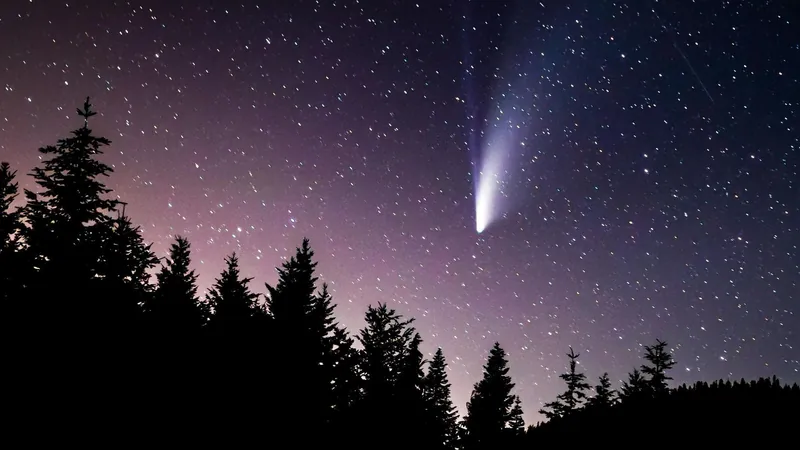
Don’t Miss Comet A3 and the Spectacular “Ring of Fire” Solar Eclipse on October 2!
2024-10-01
Author: Rajesh
The excitement is building as comet A3, also known as Comet Tsuchinshan-ATLAS (C/2023 A3), makes its way across our night sky! While early reports indicate that it’s not visible to the naked eye just yet, avid sky-watchers can still capture stunning images of this celestial traveler.
If you’re planning to catch a glimpse of Comet A3 on Tuesday, October 2, don’t miss the chance! This week, the comet moved gracefully past the crescent moon, which has been slowly waning as we approach the new moon.
As the new moon darkens the sky, it will also coincide with a breathtaking annular solar eclipse—a perfect opportunity for stargazers! The eclipse will obscure the central part of the sun’s disk, casting what’s known as the "Ring of Fire" effect, showcasing a brilliant ring of sunlight around the edges.
When and Where to See Comet A3 on October 2:
- **Position**: Look towards the east-southeast at about 19.5 degrees from the sun in the constellation Leo. - **Best Viewing Time**: Approximately one hour before sunrise in your local time zone (around 07:00 AM in the U.S.). - **Expected Brightness**: Magnitude around +4.5. - **Distance from the Sun**: 61.6 million kilometers. - **Distance from Earth**: 106.2 million kilometers.
For optimal viewing, be sure you have a clear line of sight to the eastern horizon. The comet will become more prominent as the moon will be absent from the sky, enhancing the darkness of your surroundings. The best time to observe it will be about 75 minutes before sunrise, when the skies are darker.
What to Expect on the “Ring of Fire” Solar Eclipse
On the same day, this annular solar eclipse will be a feast for the eyes, particularly for those located in the southern hemisphere. Spanning a path from the Pacific Ocean to the Atlantic, with key visibility points at Easter Island, southern Chile, and southern Argentina, the eclipse promises to be an unforgettable experience.
Don’t forget your solar eclipse glasses! Observers will need them to safely view this celestial phenomenon. Prepare for incredible photo opportunities, especially against the stunning backdrops of Easter Island's moai sculptures and the striking fjords of Patagonia!
What’s Next?
Mark your calendars, as another significant solar eclipse will occur on March 29, 2025, offering a chance to witness the sun partially eclipsed at sunrise in parts of the northeastern United States.
Stay tuned for daily updates and tips on how to track Comet A3, including sky charts and viewing strategies. Seek out these wonders of the universe—they could be the highlight of your week!
Wishing all stargazers clear skies and bright eyes! Don’t forget to share your celestial captures with fellow enthusiasts!

 Brasil (PT)
Brasil (PT)
 Canada (EN)
Canada (EN)
 Chile (ES)
Chile (ES)
 Česko (CS)
Česko (CS)
 대한민국 (KO)
대한민국 (KO)
 España (ES)
España (ES)
 France (FR)
France (FR)
 Hong Kong (EN)
Hong Kong (EN)
 Italia (IT)
Italia (IT)
 日本 (JA)
日本 (JA)
 Magyarország (HU)
Magyarország (HU)
 Norge (NO)
Norge (NO)
 Polska (PL)
Polska (PL)
 Schweiz (DE)
Schweiz (DE)
 Singapore (EN)
Singapore (EN)
 Sverige (SV)
Sverige (SV)
 Suomi (FI)
Suomi (FI)
 Türkiye (TR)
Türkiye (TR)
 الإمارات العربية المتحدة (AR)
الإمارات العربية المتحدة (AR)